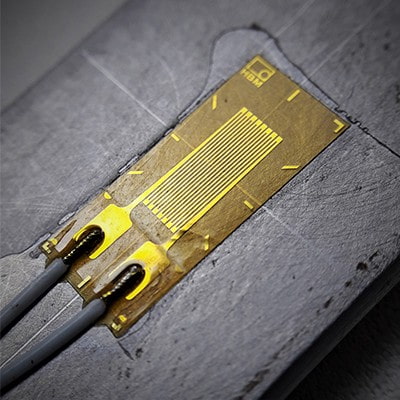In the field of engineering and material science, strain gauges are vital for measuring how objects deform when under pressure or strain. These tiny devices provide information on the stability of structures and help analyse stress. This article delves into the purpose, uses, and importance of strain gauges, highlighting their relevance across industries.
Understanding Strain Gauges
Strain gauges are tools utilised to measure the strain placed on an item. When an object undergoes stress and deforms as a result, its shape is altered minutely. These gauges detect this alteration by transforming motion into signals. Mostly crafted from wires or foil, the gauges are attached to the object under examination. When deformation occurs, the gauge’s electrical resistance varies in line with the strain felt by the object.
Types of Strain Gauges
There are different types of strain gauges designed for specific purposes in various applications. The resistive strain gauge is the most commonly used type; it works by changing its resistance when deformed due to its conductive path. Semiconductor strain gauges, although less common, provide higher sensitivity and are ideal for precise measuring tasks. Capacitive strain gauges detect changes in capacitance caused by deformation and deliver results across a range of conditions.
Applications Across Industries
Strain gauges are widely used in industries for various purposes. In the automotive field, they are used to check the durability and performance of vehicle parts. Aerospace engineers use these tools to guarantee that aircraft structures can endure extreme conditions. In civil engineering projects, strain gauges are employed to monitor bridges, dams, and buildings, ensuring safety and longevity.
Working Principle
The way a strain gauge works is based on the concept of resistance changing when the object being tested deforms. Stretching or compressing the gauge itself alters its dimensions, such as length and cross-sectional area. This change in dimensions causes a change in the resistance of the gauge, which enables the measurement of strain on the object being tested. Each type of strain gauge has a specific gauge factor that describes how resistance changes with strain. By understanding this concept, engineers can evaluate structural transformations and foresee potential breakdowns.
Installation and Calibration
Ensuring accurate strain measurements requires proper setup and adjustment procedures from the start. The adhesive selected for affixing the gauge should match the tested material to guarantee reliable results. Calibration includes subjecting the object to known forces and documenting the gauge’s response to establish a baseline for readings during testing. Routine maintenance and periodic recalibration are crucial for maintaining the strain gauge’s reliability over time.
Interpreting Data
After installation is complete and strain gauges are in place, they provide data for analysis. Engineers utilize software to interpret this data, converting signals into actionable insights. By examining strain patterns, engineers can identify vulnerabilities in structures, enhance design efficiency, and bolster safety protocols. This knowledge informs decision-making, mitigates risks, and enhances performance across a range of applications.
Challenges and Considerations
While strain gauges are essential tools in many applications, there are certain challenges and factors to consider when using them. External elements like temperature variations, humidity levels, and electromagnetic disturbances can impact measurement accuracy. Engineers must factor in these variables to ensure reliable data collection. Additionally, choosing the right type of strain gauge and the correct installation method for specific scenarios is essential for obtaining dependable results.
Future Prospects
The outlook for strain gauges appears bright due to advancements on the horizon. Nanotechnology and smart materials hold the promise of enhancing the sensitivity and reducing the size of strain gauges. Advanced methods of data analysis and wireless communication capabilities are set to improve effectiveness and ease of access. As industries continue to pursue accuracy and dependability, strain gauges are expected to evolve to meet these requirements, paving the way for solutions in various fields.
Conclusion
Strain gauges play a crucial role in the evaluation and maintenance of structural strength by converting physical strain into electrical signals that engineers can analyse to improve the safety of various constructions across different sectors. A thorough understanding of how strain gauges operate, their practical uses, and the challenges they present empower experts to use them effectively for innovation and security in engineering endeavours. With the evolution of technology, strain gauges are poised to broaden their significance, opening up avenues for advancements and deeper understanding in future projects.













Comments